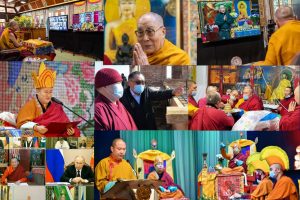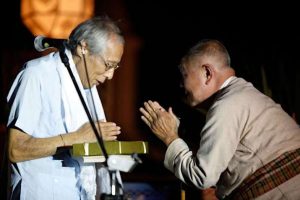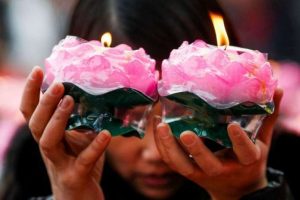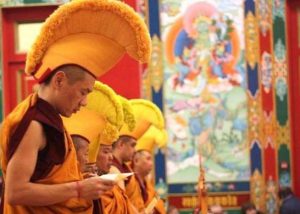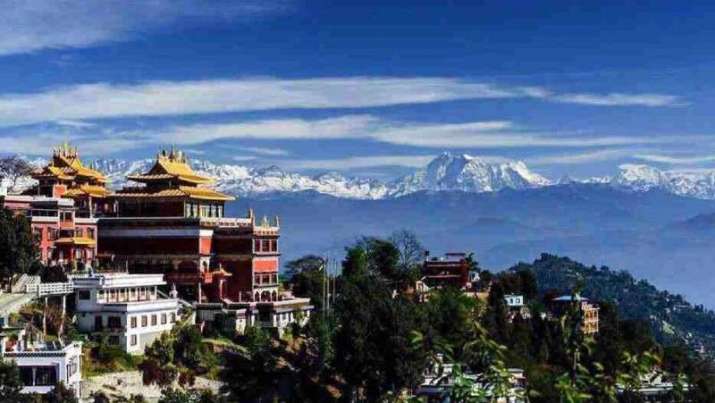
Picture a quaint wooden cabin in the piney San Jacinto mountains of Southern California, a striking red monastery in northeastern Nepal on the Tibet border, a brick house in the suburbs of the Netherlands, and a multi-story apartment in the bustling streets of Hong Kong. These are just a few of the numerous centers across the world that were founded by Venerable Khenchen Thrangu Rinpoche (b. 1933). Recognized as the ninth reincarnation of the great Thrangu Tulku of the Tibetan Buddhist Kagyu school, Ven. Khenchen Thrangu Rinpoche has dedicated much of his life to spreading the Dharma and spearheading innovative projects for the benefit of society. His contributions include, but are not limited to, preserving ancient Tibetan Buddhist texts, providing education and healthcare to marginalized communities in the Himalayas, and making complex teachings accessible to students in the West.
This month, Buddhistdoor Global had the pleasure of speaking with Thrangu Rinpoche’s nephew, Choje Lama Wangchuk Topden. Born in Kathmandu in 1983, Choje Lama attended Thrangu Rinpoche’s SMD Boarding School for Himalayan Children, where his encounter with the monks inspired him to enrobe at a young age. His spiritual journey includes the study of Buddhism at the Vajra Vidya Institute in India, a strict retreat that lasted from 2008–11, as well as three years of world travel to spread the Dharma. In 2018, he was bestowed the rare religious title Choje Lama by His Holiness the Karmapa in recognition of his service with the Thrangu monasteries.
Charged with the task of carrying out Thrangu Rinpoche’s vision for the monastic community, Choje Lama spoke empathetically about Rinpoche and he emphasized the significant contributions his teacher has made to Nepalese society. For example, he credited Rinpoche for having had the opportunity to study English at school—along with other topics such as math and science—at a time when monks were expected to dedicate themselves solely to the study of Buddhism. Although a diversified education is now commonplace in the monastic world of present-day Nepal, it was unheard of in the 1970s and 1980s. Rinpoche was looking to the future of his country, but he was met with a lot of opposition.
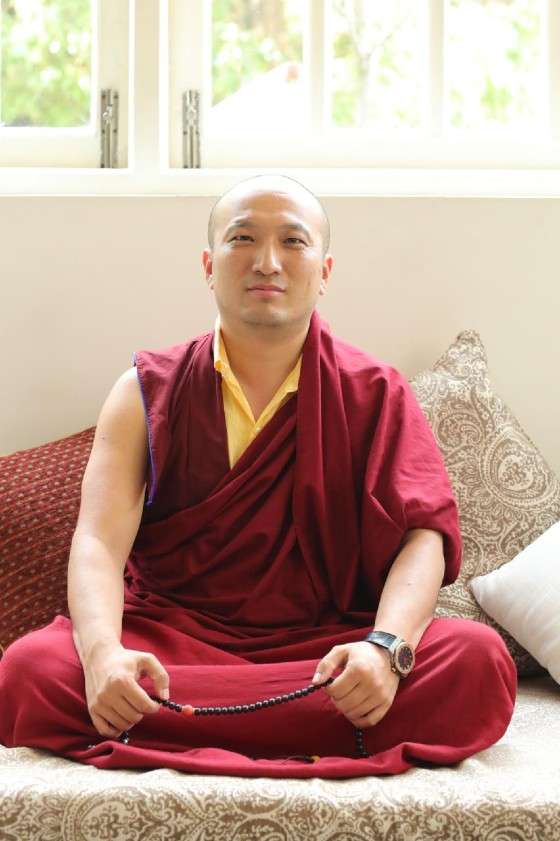
Image courtesy of Karma Jangchub
“Before the country was so developed it was a big challenge for Thrangu Rinpoche to convince people that it is beneficial to study a little bit of everything,” Choje Lama explained. “People didn’t like that idea. They thought ‘there is something wrong with this lama!’” he added, laughing.
Located in a rural area some 40 kilometers from the heart of Kathmandu, Thrangu Tashi Yangste Monastery also serves as an example of Thrangu Rinpoche’s progressiveness. Due to the lack of infrastructure in the region during the 1970s—there was no hospital, no water, and no transportation in the area—the monks who lived at the monastery had to walk to the nearest city to access healthcare. To save them the long trek, Rinpoche created a small onsite medical center that quickly became popular with the local residents. Because of this, and because of the drastic increase in monks at the monastery, it soon blossomed into a fully functioning medical center that remains popular to this day. While admission is no longer free—for legal reasons, a small fee had to be instituted—medical care remains affordable to all at just 25 Nepalese rupees, or approximately US$0.25.
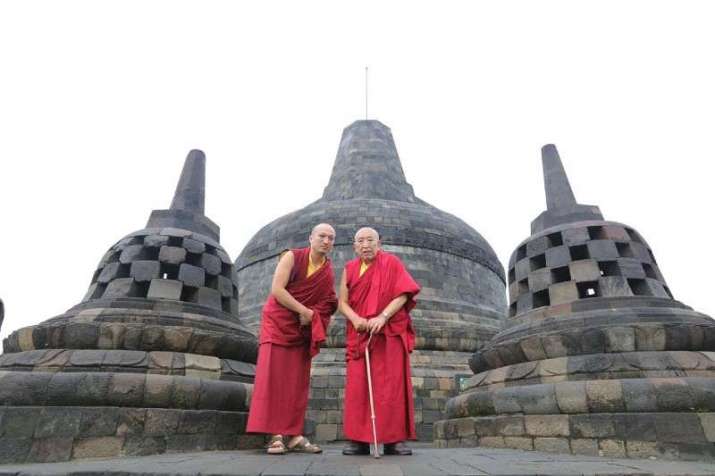
Just like the rest of the world, the Thrangu community has experienced difficulties during the COVID-19 pandemic. The school is currently closed and most students have had to return to their hometowns. One student posted on his Facebook page that his journey home consisted of a one-day bus ride followed by six to seven days of walking. Funding has also been a struggle; the Thrangu community relies on donations from Rinpoche’s international students, but of course many of them have experienced economic hardship during the pandemic and are unable to maintain their contributions. Moving forward may be a challenge, because the school is expensive to run—it provides free board, food, clothing, and school materials to the children who attend and teachers’ salaries also need to be taken into consideration. Life at the monasteries and nunneries has not been so significantly impacted. The monks and nuns who live in the same quarters are considered a family, so they are able to live and practice together without the need for social distancing. They do not require salaries and they work dutifully toward the upkeep of the buildings and grounds.
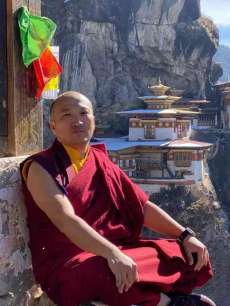
Topden. Image courtesy
of Karma Jangchub
Choje Lama noted the significant contrast in the world’s response to Nepal’s earthquake disaster in 2015, and its response to the current pandemic. Because the former was a local disaster, Nepal received significant amounts of international aid to help toward recovery. Conversely, the pandemic has affected the whole world and resulted in globalized suffering. Understandably, most countries are preoccupied with slowing the spread of the virus and preserving their own economies. While this makes Nepal’s situation challenging, Choje Lama remains hopeful; Nepal is no longer on a strict lockdown and vaccines are being rolled out. Most importantly, the pandemic has served as a difficult but valuable lesson to all.
“[The pandemic] has been an eye-opening experience,” said Choje Lama, who pointed to the fact that it has enabled people to recognize what is most important and what is not so important. “Many people were able to know that to be happy, we don’t need so many things.”
It has also been a lesson in the true nature of all things. “We believe in impermanence. Whether we are Mahayana, Hinayana, or Vajrayana practitioners, all Buddhists believe in impermanence,” he explained. Although people may assume that this is a negative view of existence, it means that nothing lasts forever. This is true when it comes to states of mind such as happiness and unhappiness; it is also true when things take a bad turn. “So I am pretty sure this pandemic is also not going to last forever. It is going to end.”
See more
Himalayan Childrens Fund
Thrangu Tashi Yangtse Monastery
The Very Venerable 9th Khenchen Thrangu Rinpoche


